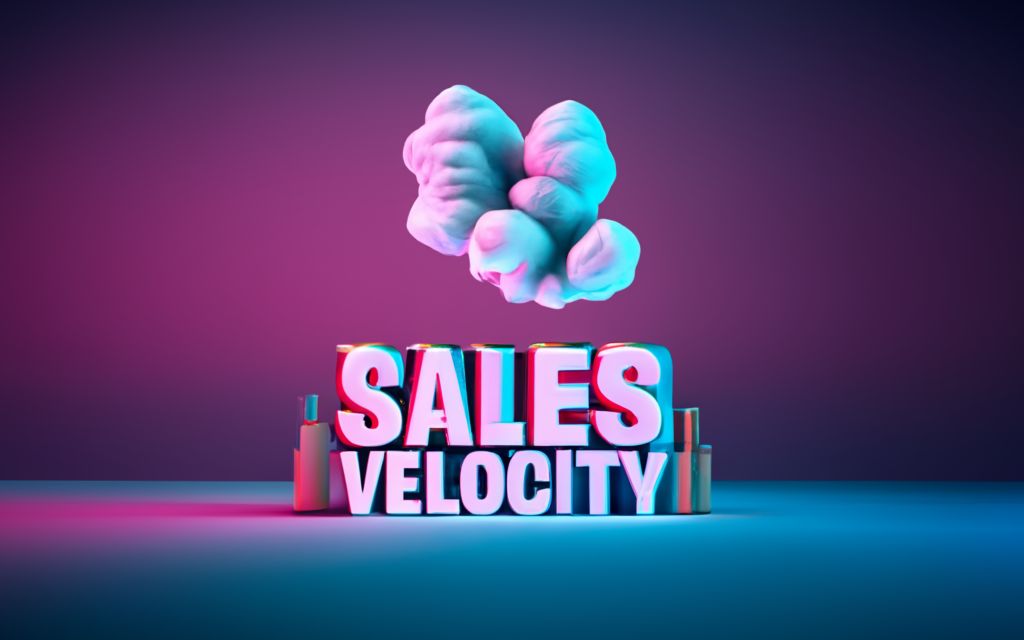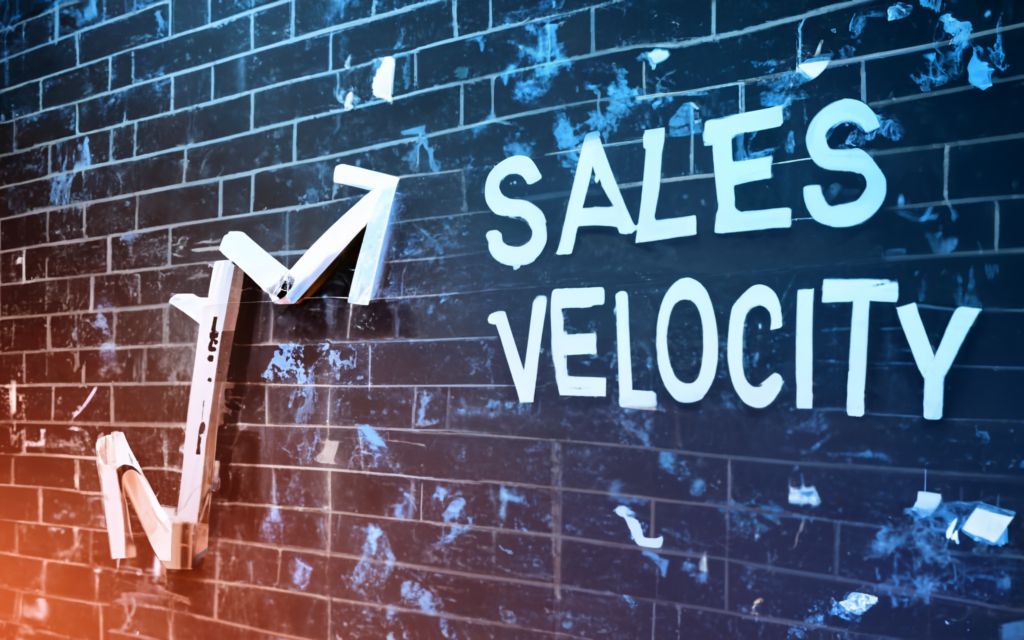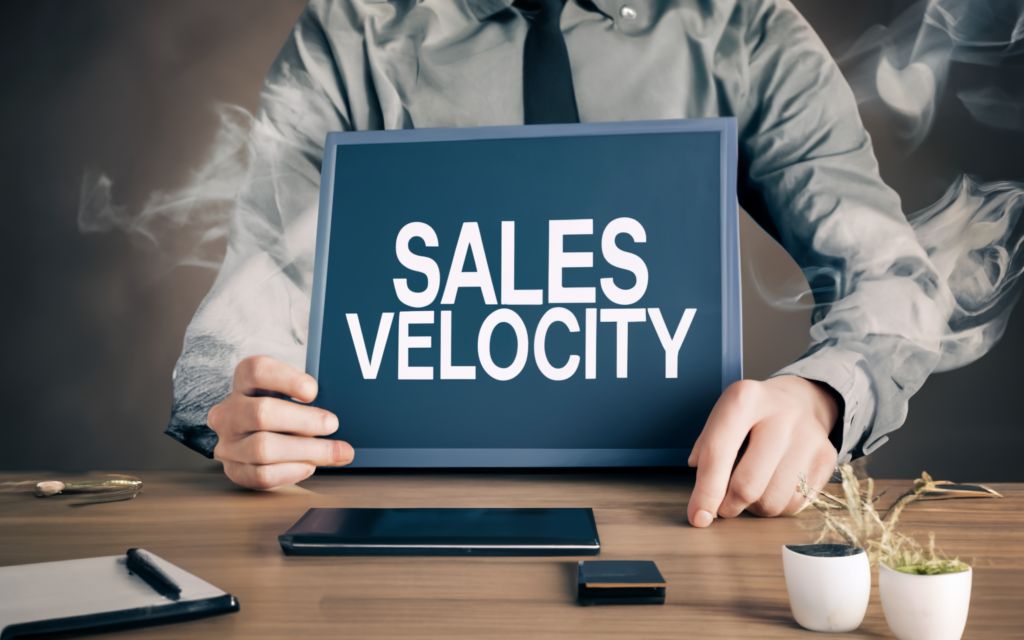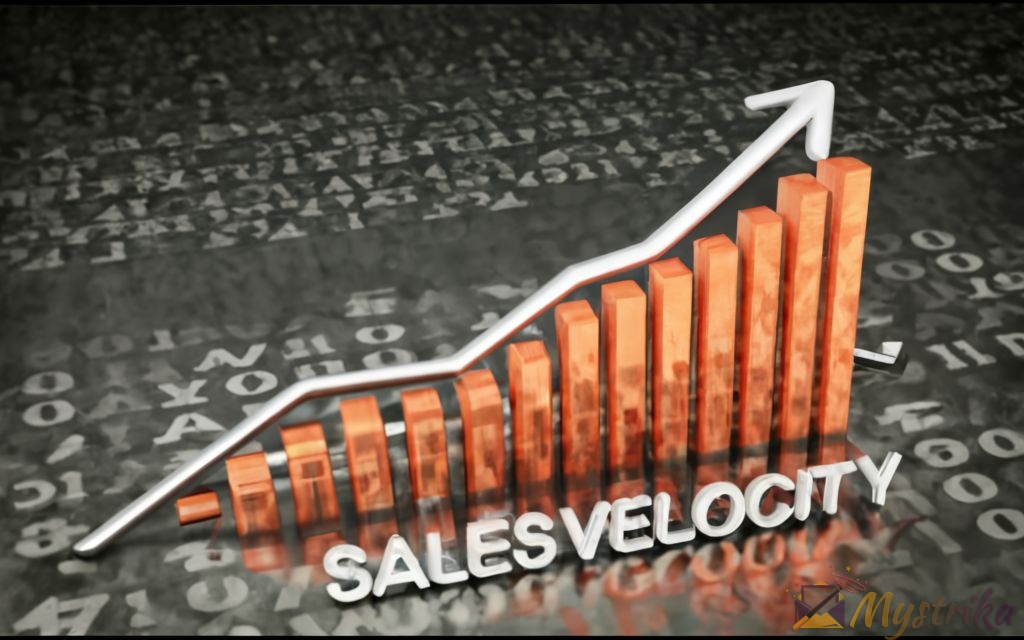Getting deals over the finish line faster. Whizzing through the sales cycle with efficient speed. Maintaining a steady cadence of closing sales. For companies seeking rapid growth, success comes down to mastering the art and science of sales velocity.
This complete guide will explore key sales velocity metrics, how to calculate them, and tactics to accelerate deals through your pipeline. Learn to leverage sales velocity data to optimize processes, incentivize behaviors, and align strategies to maximize revenue growth. Ready to shift your sales engine into overdrive? Let’s get started!
What is Sales Velocity and Why It Matters
Sales velocity is a crucial metric that measures the speed and efficiency of a company’s sales pipeline and processes. It provides vital insights into how quickly deals are progressing through the sales funnel and converting into closed revenue.
There are a few key sales velocity metrics to understand:
- Sales Cycle Velocity – The average number of days it takes to close a deal from the initial contact to signed contract. A shorter sales cycle indicates a more efficient sales process.
- Sales Throughput Velocity – The total dollar value of deals moving through the sales pipeline over a period of time, such as monthly or quarterly. Higher throughput velocity means more pipeline getting created and pushed forward.
- Lead Velocity Rate – The percentage of leads that move successfully through the sales funnel from initial contact to closed deal. Improving lead velocity rate increases sales efficiency.
Monitoring sales velocity KPIs helps companies forecast revenue growth, identify bottlenecks in the sales process, and optimize sales productivity. Here are some key reasons why sales velocity matters:
- Revenue forecasting – By tracking cycle times and pipeline throughput, sales velocity provides data to help forecast expected revenue and growth. Sales leadership can set realistic targets based on historical performance.
- Sales process optimization – Analyzing conversion rates and cycle times highlights areas of friction in the sales funnel. Fixing leaks in the pipeline improves velocity and customer experience.
- Managing sales activities – Sales velocity indicates if sales reps are spending time on the right activities. Managers can course correct activities based on data.
- Sales team performance – Comparing individual sales rep velocity metrics identifies top performers. Low performers can be targeted for coaching or training to get up to speed.
- Customer insights – Faster or slower velocity by customer segment or product line uncovers issues to address. This improves future deal cycles.
- Marketing alignment – Sharing sales velocity data with marketing focuses lead gen efforts on target buyer profiles that convert best.
By continuously monitoring sales velocity KPIs and leveraging insights, sales leaders can optimize processes, improve forecasting, and align sales and marketing for maximized revenue growth. Driving faster sales velocity ultimately leads to reduced churn, higher customer lifetime value, and greater profitability.

Calculating Key Sales Velocity Metrics
Understanding and tracking sales velocity starts with calculating some key metrics. Here are the formulas and examples for the three most important sales velocity KPIs.
Sales Cycle Velocity
Sales cycle velocity measures the average number of days it takes to close a deal from initial contact to signed contract.
Formula:
Sales Cycle Velocity = Total Days to Close / Number of Deals Closed
For example, if your sales team closed 125 deals last quarter, and it took an average of 90 days to close each deal, the sales cycle velocity would be:
90 days / 125 deals = 72 day average sales cycle
A shorter sales cycle indicates a more efficient sales process, while a longer cycle could signal issues with lead nurturing, the sales process, or sales rep effectiveness.
Here are some strategies to help shorten sales cycle velocity:
- Improve lead qualification – Score and filter leads on fit so sales pursues only highly qualified accounts.
- Effective lead nurturing – Automate relevant, valuable info to leads during sales process to advance them.
- Sales coaching – Ensure reps are promptly following up, effectively communicating value, and efficiently progressing deals.
- Remove roadblocks – Streamline any slow internal processes that prolong cycle time.
- Customer-centric sales – Make the buying journey easy and customized to each customer.
Sales Throughput Velocity
Sales throughput velocity measures the total dollar value of the sales pipeline that is moved into closed/won status during a period of time.
Formula:
Throughput Velocity = Total Closed Won Pipeline Value / Time Period
For example, if your sales team closed $1.5 million in deals last month, the monthly throughput velocity is $1.5 million.
A higher throughput velocity means more pipeline is getting created and pushed forward into closed deals each period. Comparing throughput between periods identifies trends in the pace of pipeline movement.
Throughput velocity is also related to sales cycle velocity, in that a shorter sales cycle will increase throughput. For example, closing 20% more deals by shortening the sales cycle by two weeks boosts monthly throughput.
Lead Velocity Rate
Lead velocity rate measures the percentage of leads that successfully move through the entire sales funnel from initial contact to closed won deal.
Formula:
Lead Velocity Rate = Number of Leads Converted to Customers / Number of Leads Entered into Sales Funnel
For example, if you handed the sales team 200 leads last month, and they closed 25 deals from those leads, the lead velocity rate is:
25 / 200 = 12.5%
A higher lead velocity rate indicates higher sales efficiency. Improving lead qualification processes, lead nurturing, and sales effectiveness can increase lead conversion rates. Marketing and sales alignment also improves lead velocity by focusing lead gen on ideal buyer profiles.
Monitoring these essential sales velocity metrics provides data-driven insights to optimize the sales pipeline. Regularly calculating these KPIs and comparing between periods uncovers opportunities for improvement.
Monitoring Sales Velocity KPIs
Once the key sales velocity metrics have been defined, they need to be regularly tracked and monitored. Here are some tips for monitoring velocity KPIs to gain actionable insights.
Dashboards and Reports
A sales velocity dashboard should display visualizations of essential metrics:
- Sales cycle time and trends over time
- Average deal size by stage
- Lead conversion rates
- Sales throughput by period
- Win rates by rep and stage
- Individual rep performance
The dashboard gives an at-a-glance view into sales velocity health. Drilling into the underlying reports provides details.
Setting Goals and Benchmarks
Sales velocity goals and benchmarks should be established based on historical performance and growth targets.
For example, goals could include:
- Shorten average sales cycle by 10%
- Increase lead conversion rate to 15%
- Grow monthly throughput velocity by 20%
Benchmarks set expectations for sales rep activity as well, such as:
- Minimum number of calls per day
- Target lead qualification rate
- Average number of demos per week
Goals guide what to optimize, while benchmarks indicate individual performance expectations.
Alerts and Notifications
Alerts and notifications based on sales velocity KPIs enable quick actions. Example alerts could include:
- Sales cycle exceeding average by 20%
- Lead conversion rates falling below 10%
- Monthly throughput velocity down 30% vs. target
- Sales rep demos below quota
Alerts trigger management to promptly investigate issues and identify solutions before too much momentum is lost.
Sales Pipeline Velocity
In addition to cycle time and throughput, it’s important to analyze the pace deals are moving through the sales funnel. Tracking stage progression identifies stages where deals may be stalling.
Sales stage analysis reveals:
- Average deal time spent in each stage
- Conversion rates between stages
- Win rates by stage
Bottlenecks typically occur during demos and quotes. Long cycle times in these stages imply reps may need support tailoring pitches to customer needs or overcoming pricing objections.
Cohort analysis also provides interesting insights into how stage velocity differs by:
- Sales rep – lower performers may struggle progressing deals
- Lead source – some channels deliver better leads
- Product line – complex products may have longer sales cycles
- Customer segment – new customers often have a longer first deal
This level of granularity uncovers where improvements have the biggest impact on optimizing sales pipeline velocity.
Win Rates
Win rate reports by opportunity stage highlight conversion trouble spots. For example, if opportunities have a 70% close rate at prospecting but only 20% close rate at proposal stage, it indicates issues closing after demos and quotes are completed.
Win rates by sales rep also reveal who excels at progressing opportunities and who needs coaching. High performers tend to have above average win rates across multiple stages, while new reps may have lower win rates.
Sales Activity Metrics
Finally, digging into activity metrics like calls, emails, and demos provides insights into what frontline reps are actually spending time on.
Low numbers of activities per rep could signal inefficient processes or reps not fully following up with prospects. High call volumes but low demos could indicate unqualified leads getting through.
Aligning activity quotas and reporting to your ideal sales velocity metrics improves focus on the activities that matter most to progress opportunities through the pipeline.
By monitoring these sales velocity KPIs from both the macro and micro level, sales managers get a multidimensional view of pipeline health. Ongoing tracking provides the data to continuously experiment and optimize processes for improved sales velocity.

Increasing Sales Velocity
Once you have full visibility into your sales velocity metrics, the next step is identifying opportunities to improve velocity. Here are proven ways to optimize your sales process and motivate the sales team to increase deal velocity.
Sales Process Optimization
Analyzing pipeline data often uncovers bottlenecks in the sales process that slow down deals. Addressing these issues streamlines the process and accelerates sales cycle velocity.
Common areas to optimize include:
- Lead qualification – Route poor fit leads to nurturing and focus sales team only on qualified leads.
- Handoffs – Reduce delays transferring leads between sales development and account executives.
- Quoting and proposals – Provide proposal templates, pricing guidance, and streamline review processes.
- Contract finalization – Eliminate unnecessary back-and-forth on contracts by standardizing terms.
- Information access – Ensure all customer data is centrally accessible to eliminate lookups.
Process changes should focus on eliminating redundant steps, automating repetitive tasks, and facilitating information sharing between teams and systems.
Data-Driven Decisions
Leveraging sales velocity data moves decisions from gut feel to data-driven. For example, metrics could reveal:
- New sales reps require 6 months ramp up before full productivity
- inside sales converts leads 2x more than field sales
- Mid-market segment has shorter sales cycles
Data spots bottlenecks, uncovers growth opportunities, and indicates where to allocate resources for maximum impact.
Managing Sales Team Activities
Consistently tracking sales activities provides accountability for reps to spend time on the priorities that drive sales velocity.
For example, activity metrics may show top performers:
- Make 8 demos per week on average
- Have 60% lead to opportunity conversion rate
- Spend 20% of time relationship building with current customers
Based on metrics, management can set expectations, shape behaviors, and develop underperformers.
Motivating and Incentivizing Sales Reps
Compensation plans aligned to sales velocity metrics motivate sales behaviors that translate to bottom line results.
Example sales velocity focused incentives:
- SPIFFs for shortening average sales cycle
- Bonuses for hitting lead conversion targets
- Accelerators for exceeding throughput velocity quotas
Public leaderboards and contests create healthy competition centered around sales velocity KPIs.
Aligning Sales and Marketing
Sharing sales velocity insights with marketing keeps lead generation focused on buyer profiles with the highest conversion potential.
For example, if the data shows:
- Mid-market companies have 2x lead velocity rate vs. enterprise
- Partnerships convert leads 3x faster than inbound forms
- Referrals close in half the time as marketing leads
Marketing can double down on partnerships and referrals into mid-market accounts. Aligning sales and marketing amplifies results.
Improving Lead Quality
Higher quality leads translate to faster sales velocity. Marketing can nurture and qualify leads before sales follow-up using:
Lead scoring – Score leads based on profile fit, behaviors, etc. to identify sales-ready leads.
Lead segmentation – Segment leads into tier groups, tailor nurturing tracks to each segment.
Targeted campaigns – Develop targeted messaging and offers ideal for each segment.
Better lead generation processes create a steady funnel of qualified opportunities for sales reps.
Sales Coaching and Training
Consistent coaching and training develops sales team capabilities that positively influence sales velocity.
Key areas for sales coaching include:
- Quickly developing rapport and qualifying prospects
- Tailoring pitches to customer needs
- Overcoming objections
- Managing pipeline
- Administrative tasks
Coaching needs to be consistent based on rep performance data – new hires require intensive coaching, while veterans may only need occasional guidance.
Ongoing training develops hard and soft sales skills. Training could cover topics like:
- New product releases
- Competitive positioning
- Objection handling
- Negotiation strategies
- Prospecting approaches
The best sales coaches leverage data to determine development needs for each rep.
Sales Contests and Spiffs
Friendly competitions centered around sales velocity metrics motivate the team. contests could include:
- Most demos conducted per week
- Highest lead conversion rate
- Shortest average sales cycle
SPIFF bonuses reward top performers:
- $500 bonus for each contract over $10k
- $1000 for each net new enterprise deal
Contests encourage the overall team behaviors to increase velocity, while SPIFFs reward standout results.
Sales Technology Stack
The right technology provides sales reps the tools needed to maximize sales velocity.
Essential sales tools include:
- CRM – Activity and pipeline tracking
- Dialers – Streamline outbound calls
- Email tracking – Monitor engagement
- Proposal software – Accelerate quote creation
For sales operations:
- Alerts and notifications – Act on changes
- Dashboards – Real-time visibility into KPIs
- Reporting – Dive into metrics
- Integrations – Sync data between systems
Leveraging technology eliminates productivity drag for sales reps so they can focus on high-value selling activities that drive sales velocity.
Taking a multifaceted approach across process, people, and technology transforms how quickly opportunities progress through the sales funnel. What gets measured gets improved – so focus on the sales velocity metrics that directly impact revenue growth.

Monitoring Results and Continuously Optimizing
Measuring sales velocity is just the starting point. To sustain revenue growth, you need to monitor results, conduct ongoing experiments, and keep strategies aligned with changing business goals.
Regularly Review Sales Reports
Sales leaders should schedule time every week or month to review latest sales velocity reports. Look for:
- Trends in cycle time and win rates
- Changes in throughput by segment
- Conversion rates across stages
- Individual rep performance
Periodic reviews ensure you catch any developing issues quickly.
Trend Analysis
Look at sales velocity KPI trends over the past 3, 6, or 12 months. Trend analysis reveals:
- Seasonal cycles – Some industries have more deals close at year end
- Impact of process changes – Did a new CRM tool decrease sales cycle?
- External factors – Macroeconomic changes can slow sales
- Rep performance trends – Is the new rep class ramping as expected?
Understanding trends leads to better forecasting and minimizes surprises.
Update Strategies Based on Insights
Let data-driven insights guide your priority actions to improve velocity. If win rates are low after demos, invest in rep training. If lead velocity is down, work with marketing on better lead gen.
Be ready to course correct strategies when the numbers point you in a different direction.
Ongoing Experimentation
Sales teams should continually run controlled experiments to validate and optimize tactics for improving sales velocity.
Examples of testing ideas:
- New qualifying criteria for inbound leads
- Changed sales playbooks and objections scripts
- Increased number of follow up attempts for cold leads
- New demo formats focused on specific buyer needs
Testing provides an objective way to learn what works based on the sales velocity impact each experiment has.
Keep Strategies Aligned with Evolving Business Goals
As your business grows and priorities shift, revisit whether your sales process and incentive structures still align with strategic objectives.
For example, a startup focused on rapid growth may need to transition reps from shorter-cycle transactional sales to developing enterprise accounts. Make sure sales behaviors continue driving the outcomes the business needs.
Maintaining Active Management and Coaching
Consistently monitor rep activity and calibrate coaching to help struggling reps improve sales velocity. Perform regular pipeline reviews to ensure reps have sufficient opportunities in play.
Quick course correction prevents losing momentum.
Leveraging Advanced Analytics and ML
Look to surfacing deep insights from your data using:
- Predictive analytics – Identify factors that indicate a lead is sales ready based on historical patterns.
- AI-driven CRM – Bots can automatically update CRM records to free up rep time.
- Lifetime value models – Determine expected customer value to inform sales & marketing strategies.
Advanced analytics amplify the power of your velocity data.
By relentlessly tracking sales velocity metrics and leveraging insights to fine tune strategies, sales velocity will compound as reps execute more effectively. Distill data into action to accelerate deals through your sales funnel.

Key Takeaways
- Sales velocity is a key performance indicator that measures the speed and efficiency of a company’s sales pipeline and processes. Key metrics include sales cycle time, sales throughput, and lead conversion rates.
- Regularly calculating sales velocity KPIs such as cycle time, throughput velocity, and lead velocity rate provides data to understand pipeline health and optimize the sales process.
- Sales velocity metrics enable sales leaders to set realistic growth forecasts, identify issues impeding deals, improve productivity, and align sales and marketing.
- Strategies to increase sales velocity include sales training and coaching, compensation incentives, process improvements, and sales stack technology to eliminate rep friction.
- Continuous monitoring of sales velocity trends, paired with ongoing experimentation and tuning strategies to evolving business needs, compounded sales velocity gains over time.
- By maintaining a laser focus on improving sales velocity, companies can reduce customer acquisition costs, shorten time to revenue, and significantly drive profitable growth.
Frequently Asked Questions
What is sales velocity?
Sales velocity refers to how quickly opportunities are moving through the sales pipeline. Key metrics include sales cycle time, sales throughput velocity, and lead conversion rates. Higher velocity indicates a more efficient sales process.
How do you calculate sales cycle velocity?
Sales cycle velocity measures the average number of days to close deals. It is calculated by dividing the total days to close won deals by the number of closed won deals in that period.
What is throughput velocity?
Sales throughput velocity tracks the total dollar amount of pipeline that is moved to closed/won status during a period. It is calculated by dividing the total closed won revenue by the time period, such as monthly or quarterly.
How is lead velocity rate calculated?
Lead velocity rate measures the percentage of leads that move through the entire sales funnel to become customers. It is calculated by dividing the number of leads that convert to customers by the total number of leads that entered the sales process.
Why is sales velocity important?
Sales velocity provides data to forecast revenue growth, identify issues in the sales process, optimize sales productivity, set expectations for sales reps, and align sales and marketing. Faster velocity results in reduced customer acquisition costs and accelerated growth.
What can improve sales velocity?
Strategies to improve sales velocity include sales coaching, process improvements, compensation incentives, technology automation, high quality leads, and experimentation using data-driven insights from sales metrics.
How often should you monitor sales velocity KPIs?
It’s recommended to review sales velocity metrics on a regular cadence, such as weekly or monthly. Scheduling recurring time to analyze trends, update strategies, and course correct prevents losing too much momentum.
What technologies help track sales velocity?
A CRM system to manage the pipeline paired with reporting and analytics tools to monitor KPIs and create dashboards are key technologies for tracking sales velocity.

